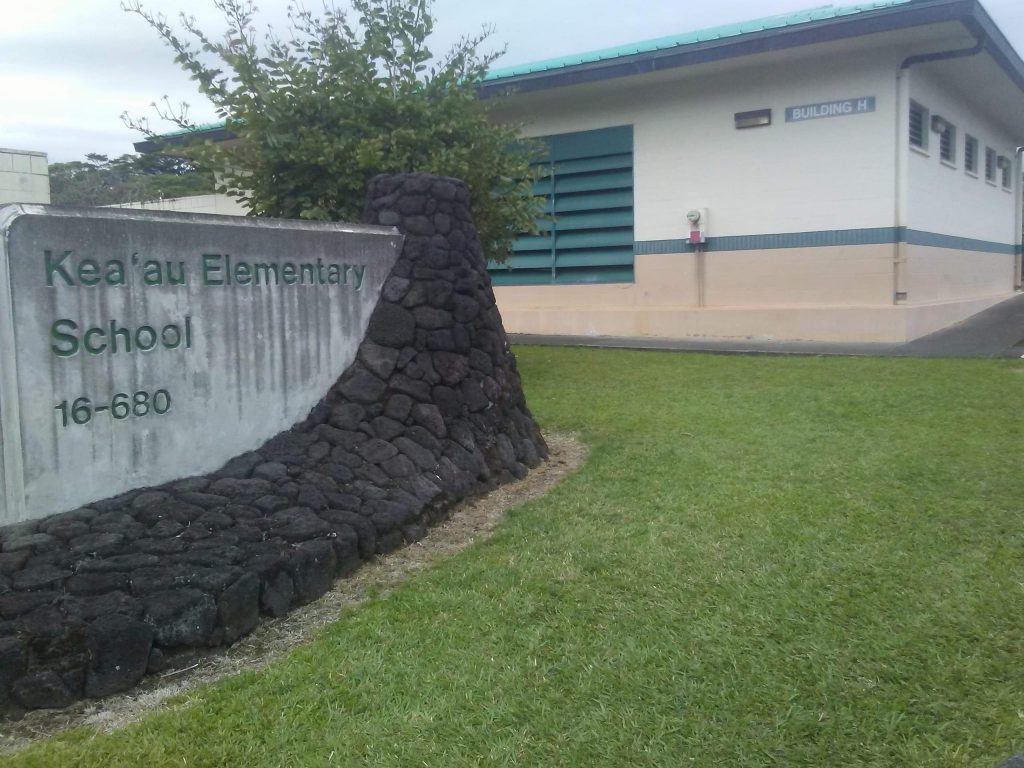How Are Concerns About School Violence Being Addressed in Hawai‘i?
During 2018, a total of 51 students lost their lives due to school shootings in the United States, a record high since 1970. In addition to lives lost, last year also saw the highest number of school shootings. There is an average of about one school shooting per week nationwide.
Although Hawai‘i is one of the few states that has not had to experience the tragedy of a school shooting, numerous threats have been made in recent years and teachers are fearful, especially since the threats of gun violence to Pāhoa and Kea‘au schools in February 2018. In fact, 2.9% of Hawai‘i youth surveyed reported carrying a gun to school in the past 30 days.
The Problem
Drug problems, domestic issues and high numbers of disadvantaged students all contribute to creating an atmosphere of rampant violence in our schools. In addition, there is a lack of accountability.
The drug problem in Hawai‘i’s public schools is considerably worse than the mainland, with 36.0% of their students reporting that they were “offered, sold, or given an illegal drug on school property” in the last year in comparison to 28.5% nationally.
Domestic violence victimization is also higher in Hawai‘i than the mainland. Domestic strangulation is a frequent occurrence on the Big Island. In fact, prosecutors dealt with more than 50 cases last year alone.
About half the youth attending Hawai‘i’s public schools have some sort of disadvantage or risk factor, with many coming from low-income homes or having special needs.
As part of a years-long federal compliance review of the Hawai‘i Department of Education’s handling of bullying and harassment complaints, students were surveyed, revealing nearly one in three Hawai‘i public school students said they’ve been the victims of bullying or harassment.
Nearly 40% of students surveyed said they feel unsafe at school due to incidents of bullying they’d experienced. The majority of students being bullied said that they were harassed based on race, national origin, sex or because of a disability.
Thoughts of suicide is also significantly more prominent in our youth than their mainland counterparts, with 20.9% of Hawai‘i youth surveyed having “seriously considered suicide” in 2001.
Only around half of bullying incidents were reported to a teacher or other school employee. Of the half that was reported, no action was taken by school officials to stop the bullying in 15% of cases.
Several elementary school staff in Puna who initially expressed concern over school violence changed their mind about speaking out once Big Island Now’s investigation began. However, Hawai‘i DOE Communications Director Lindsay Chambers denied that the department asked staff to refrain from speaking to the media.
Principal Brandon Gallagher of Keonepoko Elementary, Principal Janice Blaber of Kea‘au Elementary and Principal Michelle Payne-Arakaki of Pāhoa Elementary either declined to comment on the issue of school violence or forwarded our requests to the DOE to respond on their behalf.
Big Island Now asked the DOE: “Are principals required to report the number of lockdowns/terroristic threats/fights?” Instead of a reply, the department asked Big Island Now to fill out a Request to Access Government Record form but refused to confirm or deny whether these records were kept. The Third Circuit Family Court Judges also declined to comment on the issue of school violence.
Hawai‘i also has some of the highest incidences of disruption in the classroom in the country. Based on a study by the National Association of Education Statistics and the Department of Justice, 47% of Hawai‘i’s teachers reported that students’ misbehavior interfered with their ability to teach.
All of these problems may factor into the reason that Hawai‘i also has one of the nation’s highest rates of private school enrollment. Many parents who can afford it choose alternatives to public schooling, leaving public schools with higher numbers of disadvantaged students—resulting in more problems.
Room for Improvement
Hawai‘i’s education expenditure level, as a share of combined state and local government expenditure (current operations), is lower than every other state in the nation. Hawai‘i’s education expenditure is at just 27.3%, which is far below the U.S. average of 37.2%.
However, in 2018 the Hawai‘i DOE announced that school executives would be receiving a pay hike for the fourth consecutive year.
Hawai‘i Sen. Lorraine Inouye (District 4) said, “I support SB 856 HD2, which asks for a financial and management audit of the DOE. ”
Even though the state isn’t pitching in, the federal government recently awarded two grants worth $13 million. The money targets three at-risk areas of the state: Kaʻū-Kea‘au-Pahoa on Hawai‘i Island, O‘ahu’s Nanakuli-Waianae complex and the Honolulu North-Central schools. The grants are to make positive school climate transformation for all kids, decrease substance abuse and improve mental health.
Also, Rep. Tulsi Gabbard helped the Students, Teachers, and Officers Preventing (STOP) School Violence Act (H.R. 4909) pass last year. The bill would give federal funding for: “1) increased investment in training students, teachers, other school personnel and local law enforcement officers on how to identify warning signs of potential violence at a school and how to intervene to prevent people from hurting themselves or others; 2) better coordination between schools and local law enforcement; and 3) school security measures, including use of metal detectors, locks, lighting and other deterrent measures at schools, security assessments of schools and security training of school personnel and students.”
The bill passed the House and has yet to be decided in the Senate.
The bill has been met with some opposition.
Senator Inouye said, “I support what the act calls for but we can’t totally turn the schools into a high security zone that could distract from the learning process… It would seem that there is more control to keep people off campus than trying to stop people who are already on campus from committing a violent act… While these and other ideas may be good for school security, we must not forget that the mission of schools is to nurture learning among our students. Security measures should not get in the way of or distract our students from the learning process.”
Contact your senators here to voice your opinion on the STOP School Violence Act of 2018.
















